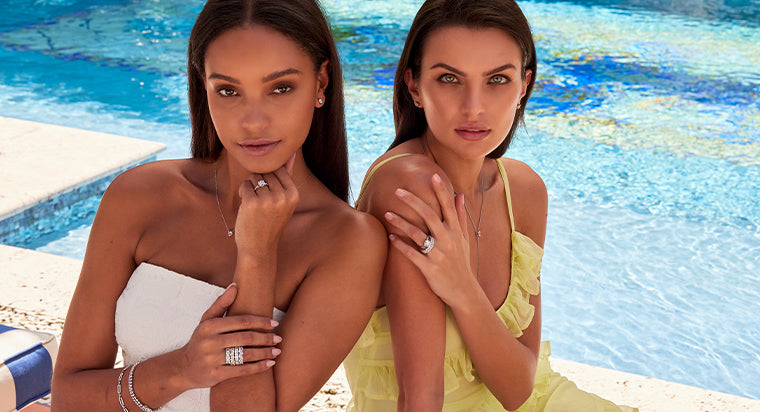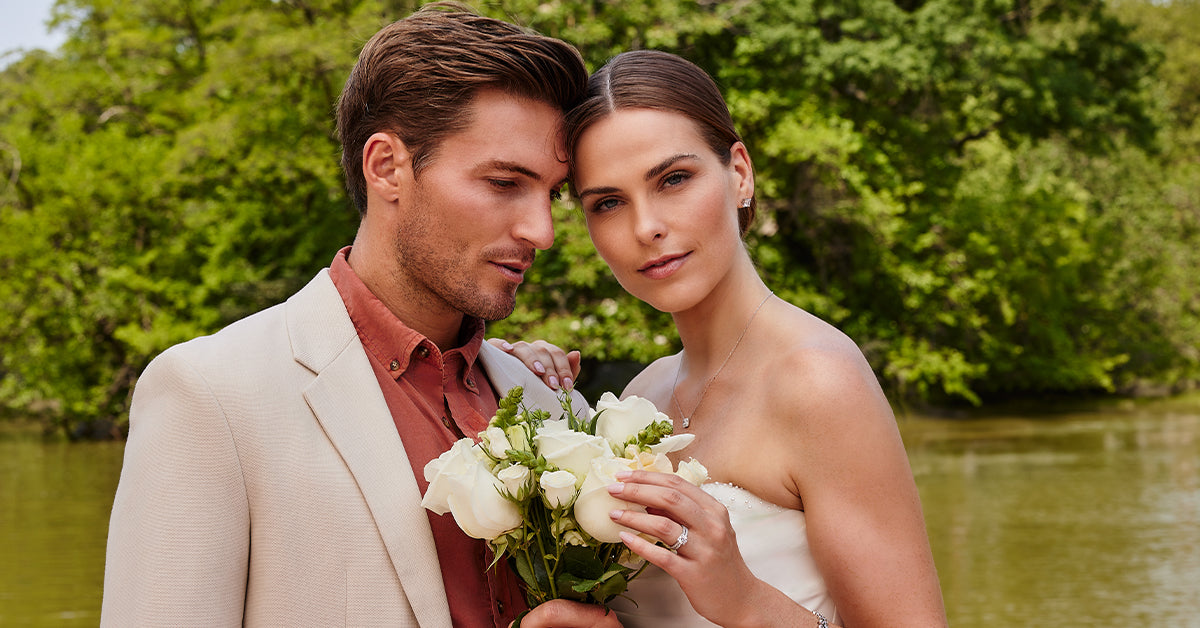Left or Right? Where to Wear your Wedding Ring?

Have you ever wondered what hand the wedding ring goes on and why? If you're curious about the answer, keep reading. We'll cover what finger is the "right" finger for men's and women's wedding rings and figure out where this tradition started.
TABLE OF CONTENTS
Traditional Placement
In many Western countries, the wedding ring is worn on the fourth finger on the left hand. This tradition of exchanging rings dates back to ancient Egypt, Greece, and Rome. These cultures began wearing their wedding rings on their fourth fingers on the left hand because they believed there was a vein in this finger that connected the finger and the heart. This tradition continues to this day!
Cultural Variations
While Western cultures wear wedding rings on their left hand, there are also cultures that wear rings on their ring hands. In Norway, Austria, Denmark, Poland, Belgium (some areas), Germany, Russia, Latvia, Greece, Bulgaria, and Ukraine, wedding rings are worn on the right hand. In some cultures, the ring is worn on the left hand up until the wedding day, and then the ring is switched to the right hand.
Historical Perspective
It's pretty amazing to think that a tradition that originated 3000 years ago is still common today. The first evidence of two people exchanging rings was found in ancient Egypt. Writings, called papyrus scrolls, showed couples exchanging rings that looked like they were made of hemp or reeds. Early Egyptian and Roman rings were made of hemp, leather, reeds, bone, ivory, flint, copper, or iron, according to the Gemological Society of America (GIA). They were worn to demonstrate mutual love and obedience.
Modern Practices
While some couples follow tradition and wear wedding rings on their left hands, there's no reason for everyone to follow that rule. Couples can make their own traditions and wear rings on the finger that they are most comfortable with. You can follow cultural norms or create your own personal preferences. It's up to you!
Engagement Ring vs. Wedding Ring
Typically, a wedding proposal involves an engagement ring. This ring is worn on the left hand until the wedding ceremony, and then typically, there's an engagement ring and a wedding ring for the left hand. Some Europeans will wear their engagement ring on the left and switch it to the right when they get married. If you're going to stack your engagement and wedding rings, most wear the wedding band on the bottom, so it's closer to the heart.
Symbolism
Roman believed that the finger on the left hand connected the finger to the heart. They called this the "vena amoris", or vein of love. However, we now know that all fingers are connected to the heart by veins. However, tradition still has Western cultures wearing a ring on the left hand. While the ring is worn on the right in some other cultures, it's a personal choice on which hand to wear your wedding ring.
Practical Considerations
You might have some practical reasons for wearing your wedding rings on different hands or even different fingers. One hand may be more comfortable than the other. If you're left-handed, you might prefer to wear your wedding rings in your right hand. If you work with your hands often, you might want to wear a ring on a different finger so it doesn't interfere.
Gender Neutrality
For same-sex couples, many choose to wear rings on the traditional ring finger on the left hand. Some couples wore commitment rings before same-sex marriages became legal in the U.S. Since the Supreme Court ruling, more same-sex couples have switched rings to the left hand.
Tips for Choosing
Ultimately, choosing which hand and finger for your wedding ring is up to you. You'll need to weigh tradition with comfort, culture, and personal preferences. The decision also might come down to practicality if you work with your hands or are left-handed. If you have some rings at home, you could test wearing rings on different fingers and hands to see what works best before purchasing a wedding ring.
Keep in mind that the decision might be impacted by the style of wedding ring you choose. Some wedding rings are more minimal, but others are more extravagant with diamonds or other gemstones. Some bands are thicker, while others are thinner too. Some couples choose matching or similar bands, while others simply prefer the rings they want.
To Summarize
The custom of sporting wedding rings on the left hand dates back thousands of years. Ancient cultures believed a vein connected the finger on the left hand to the heart. While many Western cultures continue to wear wedding rings on the fourth finger of the left hand, many other cultures prefer the right hand.









